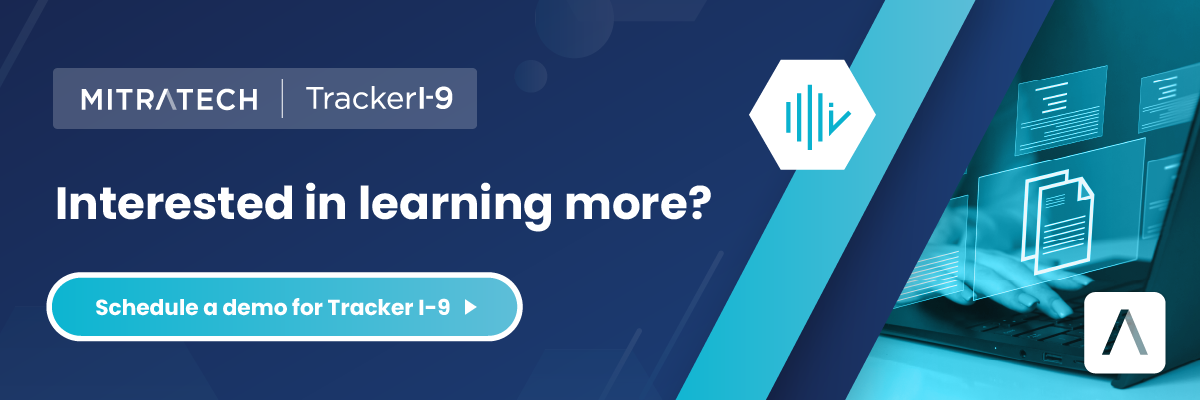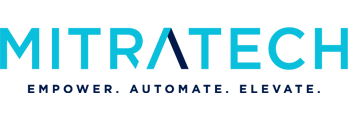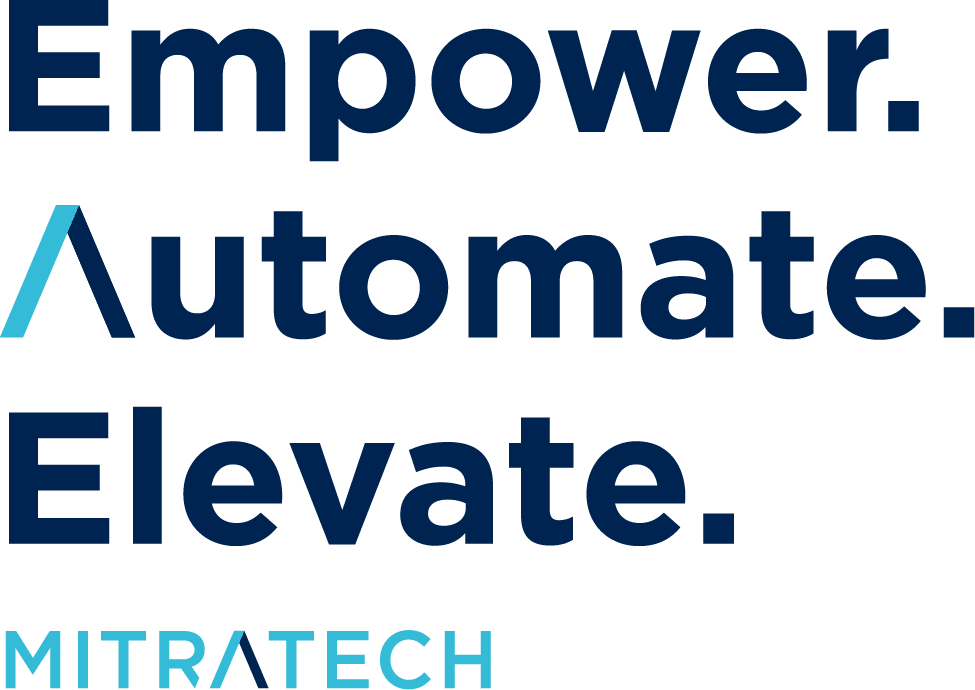I-9 Form FAQs: What HR Teams Ask Us Most
Struggling to keep up with Form I-9 compliance? You’re not alone.
The Form I-9 may seem relatively straightforward, but with evolving regulations, remote hires, and strict documentation rules, even small errors can lead to big consequences.
I put together this I-9 FAQ to help you quickly find answers to the most common questions HR teams face. From document verification to retention timelines, consider this your go-to resource for staying compliant and confident.
(And if you’re looking for a deeper dive, check out our Complete Guide to Form I-9.)
What Is the I-9 Form?
The Form I-9, issued by U.S. Citizenship and Immigration Services (USCIS), is a required document for verifying the identity and employment authorization of individuals hired to work in the United States.
This isn’t just another onboarding form, it’s a core part of maintaining a legal, compliant workforce. Employers are required to complete and retain an I-9 for every employee, and failure to do so properly can result in significant fines, penalties, or even audits from agencies like Immigration and Customs Enforcement (ICE).
For HR teams, getting this form right means more than ticking a box, it’s about protecting your organization from risk while demonstrating a commitment to fair and lawful hiring practices.
Our complete blog post, What is Form I-9?, has even more information.
Why the Form I-9 Process Matters
If you’ve ever had to dig through old paperwork during an audit or clarify a documentation mistake months after onboarding, you already know. Form I-9 isn’t just another checkbox in the hiring process.
This process is how HR teams verify that each new employee has the legal right to work in the U.S. It’s a requirement under federal law, and when done correctly, it protects both your organization and your workforce.
That means:
- You’re confirming employment eligibility, not with assumptions, but with valid documentation reviewed within three business days of the hire date.
- You’re showing that your hiring practices comply with the Immigration Reform and Control Act (IRCA), which mandates the use of the I-9 for all U.S. employers.
- You’re building a consistent, equitable process, treating all hires the same regardless of status or background (because inconsistency here can lead to unintentional discrimination claims).
- You’re ready if auditors come knocking. Keeping organized, compliant I-9 records reduces scramble time and demonstrates that your HR team takes employment law seriously.
The I-9 process may seem straightforward, but in practice, it requires diligence. A single missing signature, outdated form, or lost paper file can result in costly penalties. Getting it right from day one matters, and that’s what makes your role in this process critical.
Who’s Required to Complete Form I-9?
Every new employee hired to work in the U.S. must complete Form I-9, no exceptions.
Employees are responsible for completing Section 1 by their first day of work. That includes providing personal information such as their full legal name, address, date of birth, and confirming their employment authorization status. This applies to all workers, whether they’re U.S. citizens, permanent residents, or individuals with work authorization.
Employers, on the other hand, must:
- Ensure Section 1 is completed on time;
- Review and verify the employee’s documentation in Section 2; and
- Finalize the form within three business days of the employee’s start date.
For HR teams, this means building the I-9 process into onboarding workflows and maintaining consistency across roles, locations, and hiring volumes. Mistakes, such as incomplete fields or late verifications, can add up to fines during audits.
Ultimately, both the employer and the employee play a role in making sure the form is accurate, complete, and submitted on time.
Understanding the Sections of the I-9 Form: A Quick Breakdown
To stay compliant and avoid penalties, HR professionals must understand how to correctly complete and manage each section of Form I-9. The form is divided into three distinct sections, each with specific responsibilities and timelines:
Section 1 – Employee Information & Attestation
Who completes it: The employee
When: No later than the first day of employment
New hires are responsible for completing Section 1, which includes their name, address, date of birth, Social Security number (if applicable), and immigration status. They must also sign the attestation confirming their authorization to work in the U.S.
HR’s role: While you can’t complete this section for the employee, you are responsible for reviewing it for completeness and ensuring it’s submitted on time. Missing or inaccurate information can create compliance risk from Day 1.
–
Section 2 – Employer Review & Verification
Who completes it: The employer (or authorized representative)
When: Within three business days of the employee’s start date
In this section, the employer examines the employee’s original documentation from the lists of Acceptable Documents to confirm both identity and work authorization. You must physically (or remotely, if compliant) inspect the documents and complete the Employer Certification.
Why it matters: Mistakes here, such as accepting unapproved documents, copying IDs incorrectly, or missing deadlines, are some of the most common triggers for I-9 audits findings and fines.
–
Section 3 – Reverification & Rehires
Who completes it: The employer
When:
- When an employee’s work authorization expires
- If you’re rehiring an employee within three years of their original I-9
- When legal name changes or employment status updates occur
Section 3 is often overlooked, but it plays a vital role in maintaining long-term compliance. Any time an employee’s work authorization has a time limit, HR must track and reverify it before expiration.
Tip: Many electronic I-9 systems, like Tracker I-9, offer built-in alerts to track reverification deadlines, so nothing falls through the cracks. Tracker I-9 is the only simple, intuitive, and end-to-end I-9 compliance software solution that’s maintained a perfect track record of zero client fines in federal and ICE audits.
Final Note for HR Teams
The I-9 process isn’t just about collecting paperwork, it’s a legally mandated procedure that reflects your company’s commitment to compliant hiring practices. Understanding each section helps protect your organization during audits and ensures a smoother onboarding experience for every new hire.
I-9 Form FAQ
What is E-Verify?
E-Verify is a web-based system. The U.S. Department of Homeland Security (DHS) runs it with the Social Security Administration (SSA). It’s a free tool employers use to confirm employment eligibility. E-Verify doesn’t reveal details. It only shows if a person is employment authorized (a match) or has a tentative nonconfirmation (a mismatch). It doesn’t say where the employee is from. It also doesn’t say what documents they showed.
Here’s how E-Verify works:
- Employer Creates Case – The employer creates a case in E-Verify. They do this by entering information from the employee’s Form I-9. This includes the employee’s name, date of birth, and Social Security Number.
- Electronic Verification– E-Verify then compares the employer’s entry to records from DHS and SSA.
- Verification Results – The employer receives a response within a few seconds. They will get one of the following results:
- Employment Authorized. The information entered matches records available to DHS and/or SSA, and the employe may work in the United States.
- Tentative Nonconfirmation (Mismatched Information). There’s a mismatch between the information entered by the employer and the government records. In this case, the employee has an opportunity to resolve the issue with DHS and SSA.
Is E-Verify mandatory?
No, E-Verify isn’t mandatory for most employers. However, it’s required for certain federal contractors and employers in states that have passed laws mandating its use. For the majority of businesses, participation is voluntary, but strongly encouraged as a best practice for maintaining compliance. Check with your state’s specific regulations or legal counsel to determine whether E-Verify is required for your organization.
Can you contest E-Verify results?
Yes, if an employee receives a tentative nonconfirmation (TNC) through E-Verify, they do have the right to contest the results. A TNC simply means that the information submitted didn’t match records from either the Department of Homeland Security (DHS) or the Social Security Administration (SSA). It doesn’t automatically mean the employee is unauthorized to work; rather, it signals that there’s a discrepancy that needs to be addressed.
When a TNC occurs, the employer must notify the employee in private and provide a Further Action Notice (FAN) explaining the situation. The employee can then choose to contest the result by signing the FAN and confirming their decision to take action. Once the employer updates E-Verify to reflect this choice, the employee has eight federal government workdays to contact the appropriate agency—SSA for Social Security mismatches or DHS for immigration or work authorization issues.
During this time, the employee can submit additional documentation or other evidence to help resolve the discrepancy. If the mismatch is cleared, E-Verify will update the case to “Employment Authorized.” If the issue is not resolved within the required timeframe, or if the agency confirms the mismatch, the result will change to a Final Nonconfirmation (FNC) and the employer may end the employment.
What’s the three-day rule for Form I-9?
The three-day rule refers to the timeframe within which employers must complete Section 2 of Form I-9. This applies to the employer or their authorized representative.
Here’s a breakdown of the three-day rule:
- Employee’s Responsibility: Within the first three business days of starting work for pay, the employee must present original and acceptable documents that establish their identity and employment authorization (Section 1 of Form I-9).
- Employer’s Responsibility: After the employee completes Section 1, the employer has three business days to examine the documents and complete Section 2, which verifies the information.
There’s an exception to the three-day rule. Employees working less than three days must complete both Section 1 and Section 2 of Form I-9 no later than the first day of work for pay if they are hired for less than three business days.
What if Form I-9 isn’t completed in three days?
There are consequences if the Form I-9 isn’t completed within the three-day window.
For Employers:
- Fines: The U.S. Citizenship and Immigration Services (USCIS) can impose civil fines. The fines can vary. They depend on the violation’s severity and range from hundreds to thousands of dollars per form.
- Verification Issues: An incomplete I-9 form can delay or prevent the employer from verifying an employee’s employment eligibility through E-Verify.
- Hiring Issues: If an employer knowingly hires unauthorized workers, they may face penalties including back pay, recruitment restrictions, and even criminal charges.
For Employees:
- Termination: An employee who fails to present acceptable documentation within the three-day window may be terminated. This is especially true if they’re unable to provide a legitimate reason for the delay.
Here’s what to do if the I-9 form isn’t completed within three days:
For Employers:
Complete the Form ASAP: Even if the 3-day window has passed, it’s important to complete the I-9 form ASAP. You cannot backdate the form, but you can attach a clear explanation for the delay.
For Employees:
Present Documents: If you haven’t presented the required documents yet, do so as soon as possible. Explain any delays to your employer.
What Documents Are Acceptable for Proof of Identity and Employment Authorization?
When completing Form I-9, employees must present documents that verify both identity and employment authorization. These documents fall into three categories: List A, List B, and List C.
List A documents establish both identity and employment authorization. Examples include:
- U.S. Passport or U.S. Passport Card
- Permanent Resident Card (Green Card)
- Foreign passport with an appropriate work visa
List B documents establish identity only (must be paired with a List C document).
List C documents establish employment authorization only (must be paired with a List B document). Examples of List C documents include:
- Social Security card (unrestricted)
- Employment Authorization Document (EAD) issued by USCIS
Important Compliance Note: Employers cannot demand specific documents from employees. The employee chooses which valid documents to present from the official USCIS Acceptable Documents list. As long as the documents are current, valid, and meet Form I-9 requirements, they must be accepted.
Tip: Employees should have their chosen documents ready during onboarding to avoid delays in starting work.
Can an employer ask for specific documents from an employee?
When it comes to Form I-9, employers must treat all employees equally in the documentation process. It’s illegal for an employer to demand or require specific documents from an employee. Instead, employers must provide the official Form I-19 Acceptable Documents (List A, List B, and List C) from USCIS and allow the employee to choose which valid documents to present.
Requesting specific documents can:
- Lead to discrimination claims
- Violate anti-discrimination laws
- Create unnecessary risk for your organization
Best Practice for HR: Only request the documentation required under USCIS guidelines. Never impose extra requirements on certain individuals or groups. Fairness and compliance with immigration laws not only protect your organization but also make the hiring process smoother for everyone involved. Remember, the documents you may accept are clearly outlined in List A, List B, and List C—and the choice belongs to the employee.
How to Correct an Error on a Previously Filed I-9 Form
Mistakes on Form I-9 can create compliance risks for your organization. While prevention is always best, knowing how to properly correct errors is essential, and it’s critical to do so without concealing the original information.
Correcting Minor Errors
If the mistake is small, such as a typo in a name or date:
- Draw a single line through the error. Don’t erase or use correction fluid.
- Write the correct information clearly next to the crossed-out text.
- Initial and date the correction. Both the employer (or authorized representative) and the employee should acknowledge the change.
Correcting Multiple Errors in One Section
If there are multiple mistakes in Section 1 or Section 2:
- Redo the section on a new Form I-9.
- Attach the corrected section to the original form.
- Include a written explanation that’s signed and dated, explaining why the section was replaced.
Correcting Major Errors or Incomplete Forms
If the form is missing significant information or entire sections are blank:
- Complete a New Form I-9 in its entirety.
- Attach a written explanation that’s signed and dated, explaining why a new form was required.
Important Best Practices
- Never use correction fluid or erase errors, this can appear as an attempt to hide information and may result in penalties.
- Keep the original, corrected, or replaced forms along with written explanations in the employee’s personnel file.
Always follow the latest official recommendations for correcting I-9 errors.
Breathe Easy with the Best I-9 Compliance Software
I-9 compliance can feel overwhelming, but it doesn’t have to be. With the right tools, managing these requirements becomes faster, easier, and far less stressful for HR teams. That’s where technology comes in as your game-changer.
Mitratech’s I-9 software streamlines every step, helping both employers and employees complete the process with confidence.
Here’s how we make it effortless:
- Guided Form Completion: Employees are walked through each section electronically, minimizing errors and saving valuable time.
- Automated Document Checks: Verify document authenticity in seconds, reducing mistakes and speeding up onboarding.
- Secure Storage and Alerts: Keep I-9 forms safe and receive automated reminders for upcoming expirations, so compliance never slips through the cracks.
Ready to Modernize Your I-9 Process?
The paper-based I-9 process is outdated and it puts your organization at risk. Manual tracking, missed deadlines, and compliance gaps can turn routine hiring into a liability. Your job is already full of shifting priorities, changing laws, and growing teams. Digitizing your I-9s won’t just make your process cleaner, it gives you back control, time, and peace of mind.
Tracker I-9, part of Mitratech’s integrated HR compliance platform, helps you stay compliant, reduce administrative overhead, and simplify onboarding, all while ensuring your records are secure, complete, and ready to pass any audit with confidence.
But what truly sets Mitratech apart isn’t just the software, it’s the partnership.
Since 1987, Mitratech has been more than a vendor. We’ve been a strategic ally to thousands of HR, legal, and compliance teams across industries.
Our clients count on us for:
- Built-in compliance expertise, not just tools
- Dedicated account support from professionals who know your challenges
- Scalable solutions that grow with your workforce
- Seamless integrations with your existing HR tech stack
- A proven track record of supporting complex, high-volume environments
With Tracker I-9, you don’t just digitize a form, you gain a partner in protecting your people, processes, and reputation.
Ready to take the stress out of I-9 compliance? Schedule your free demo today and discover how our platform can transform your onboarding process.
Got the resources to meet return-to-work challenges?
Mitratech offers the right solutions and support to help you pivot to meet post-pandemic demands.



